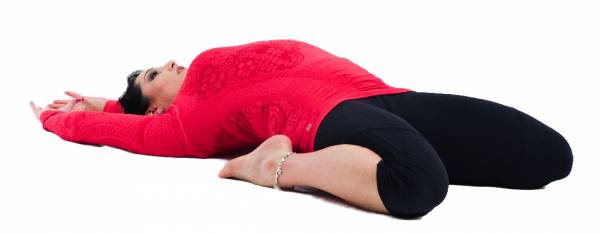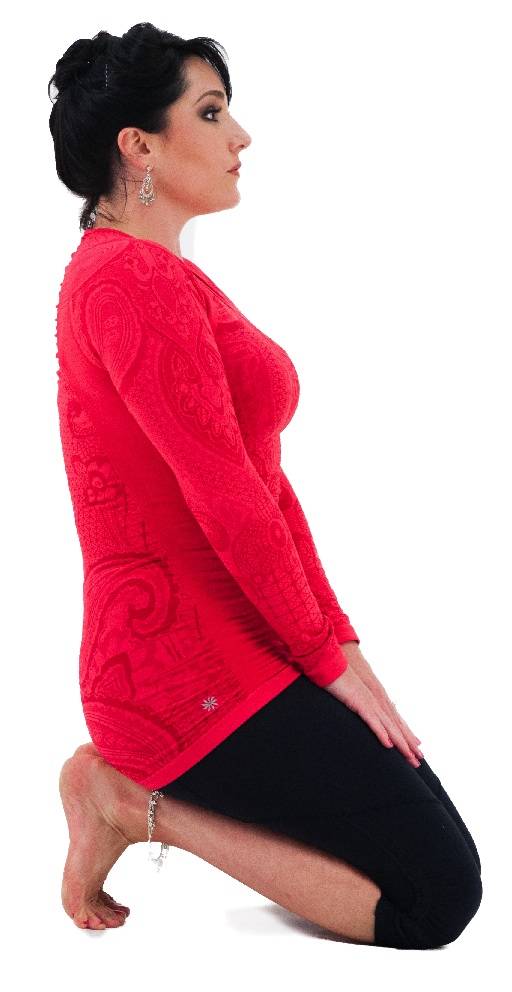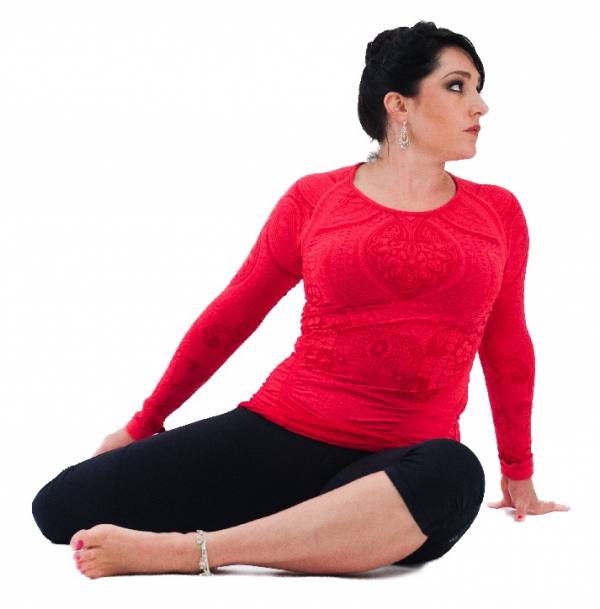I’m currently training for a half-marathon, and I’m grateful to have a yoga practice to mend my body after my long runs. Each Saturday is my distance run, and each Sunday I feel like there’s no way I’ll be able to make it through another week of training. But by Tuesday, with proper attention to rest and recovery, I do. Here are the three main poses that mend my sore body:
Half, Full, or Reclining Hero’s Pose
(Ardha Virasana, Virasana, or Supta Virasana)
- Start kneeling with your sit bones between your ankles. If your sit bones do not touch the floor, sit on a block or towel. Hug the outer ankles in to avoid rolling or sickling the foot. Keep the knees no wider than the hips. If this is too much, extend one leg and do half hero’s pose (ardha virasana). If you are seated on a prop and feel this pose is tolerable, stay here.
- If you feel you can go deeper without
 allowing the knees to come wider than the hips, walk the hands behind you. Begin to lower down toward forearms or, if the knees and quadriceps permit, all the way onto the top of the head or mid-back. There is a slight bend in the low back to permit this posture. You can lie down on a bolster or block if you can’t quite touch the floor.
allowing the knees to come wider than the hips, walk the hands behind you. Begin to lower down toward forearms or, if the knees and quadriceps permit, all the way onto the top of the head or mid-back. There is a slight bend in the low back to permit this posture. You can lie down on a bolster or block if you can’t quite touch the floor. - Hold for up to five minutes. If you are in the half version, repeat on the second side.
 Benefits: This pose opens the fronts of the legs, specifically the quadriceps and psoas muscles. The fronts of the legs get extremely fatigued in long runs. This pose is great for tight ankles. However, if your ankles are too tight to permit this posture, you can place one bolster under the ankles and one under the knees, allowing you to maintain the arch of the ankle. This pose also helps maintain flexibility in the knees. If you have any major knee injury, it is not the pose for you. However, if this pose just causes light discomfort in the knees, that is normal. Try to stay with the discomfort, as your knees will thank you in the long run. (Or, as it is, after the long run!)
Benefits: This pose opens the fronts of the legs, specifically the quadriceps and psoas muscles. The fronts of the legs get extremely fatigued in long runs. This pose is great for tight ankles. However, if your ankles are too tight to permit this posture, you can place one bolster under the ankles and one under the knees, allowing you to maintain the arch of the ankle. This pose also helps maintain flexibility in the knees. If you have any major knee injury, it is not the pose for you. However, if this pose just causes light discomfort in the knees, that is normal. Try to stay with the discomfort, as your knees will thank you in the long run. (Or, as it is, after the long run!)
 Foot Stretch
Foot Stretch
- Start on all fours with the toes tucked, so the “necks” of your toes are long. You may keep the knees under the hips or widen them lightly. At first, keep your hands on the floor, and press back like child’s pose until your sit bones rest on your heels. You may stay here, pressing weight into your heels to stretch your toes and feet.
- If you feel you can bear more weight, begin to come upright. Little by little you may lift your chest all the way. Keep your knees grounded and no wider than the hips if you choose the upright variation.
- Sit the weight of your body on your heels, allowing your arches and toes to stretch, for up to five minutes. You probably won’t last that long, and I don’t fault you for it!
Benefits: This pose is excellent for plantar fasciitis. I recently had a bad flare-up of perineal tendonitis after a long run, and this pose has been my savior. I went from hobbling along to walking normally in just a few days.
 Deer Pose
Deer Pose
(Mrigiasana)
- Start seated in butterfly position. Keep your right leg as is, but bend your left leg behind you, so your heel nestles by your sit bone like a hurdler position. Shift the left leg lightly forward, aiming for a ninety-degree angle in the knee. The feet will be close to the body if the hips are tight, but may gently pull away from the body in more flexible athletes. You can stay right here, opening the front of the left hip.
 If you’d like a deeper option, you can begin to turn toward the right, keeping both sit bones grounded. In time, your chest may draw to the floor, folding your body down on top of the right leg.
If you’d like a deeper option, you can begin to turn toward the right, keeping both sit bones grounded. In time, your chest may draw to the floor, folding your body down on top of the right leg.
Benefits: This is a very light opener for the psoas, which is sometimes all it can take after long runs. When taken with a twist, deer pose also helps to open the side of the body, including the low back. This is a nice option for those who are running on hard surfaces, as the low back can take a beating when the feet repeatedly pound pavement. Deer pose is incredibly restorative to the adrenals. You may take each side for five to seven minutes or until you feel complete. Try to rest fully in this pose, even if that means supporting yourself on a prop. Your energy levels should feel restored after deep holds in this pose.
Take these poses not only on your first day after your run, but also throughout your training. Continuing to open the psoas, quadriceps, feet, arches, and low back will help your legs feel lighter – as well as prevent injuries – throughout your training. Happy running!
Photos property of Breaking Muscle.






